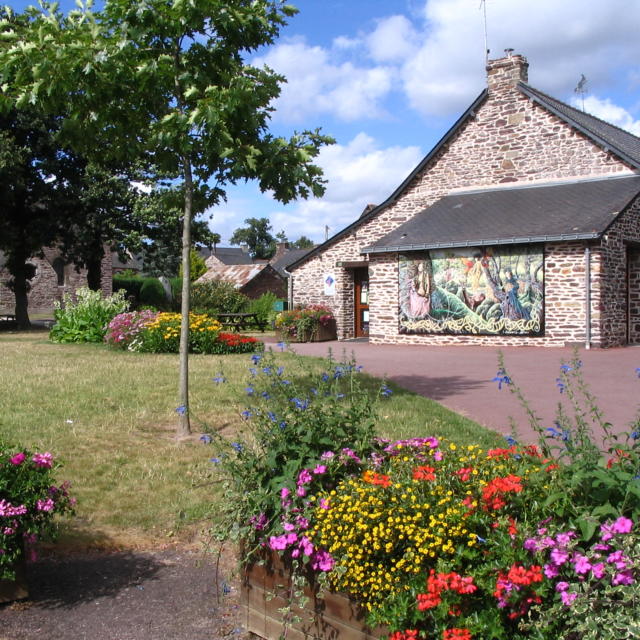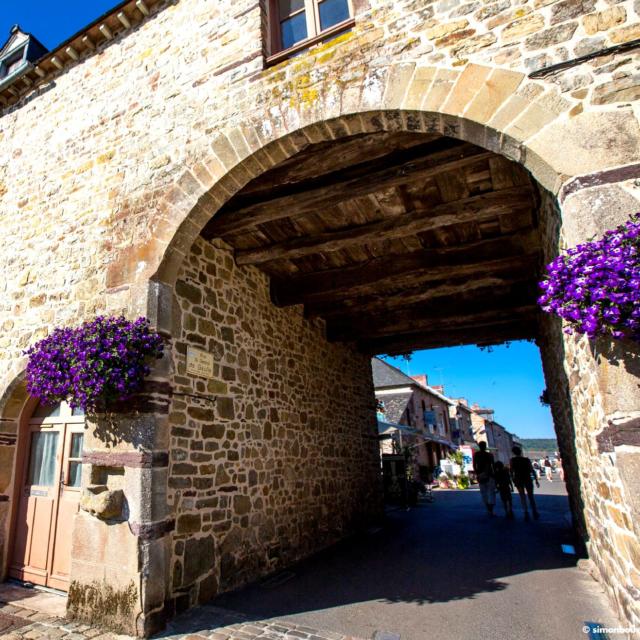A unique historical site in Brocéliande
Come and explore a place where power and faith reigned supreme. In the 7th century, Saint Judicaël and Saint Méen began building a priory dedicated to Notre-Dame. Nothing remains of it today. Construction of the buildings that can still be seen while strolling along the banks of the pond began in the 13th century. It was inhabited by canons, and the abbey shone in the Brocéliande forest: justice, economy and fairs, the abbey was the lord of Paimpont! But over the centuries, the abbey has undergone many changes…
When architecture takes us back in time…
Through the different periods of construction and expansion, the abbey offers you a true experience of the past! The church’s wooden vaults, rose window and portal allow you to experience the elegant Gothic style characteristic of the 13th century. And what about the woodwork, transepts and choir, built in the purest classical style – you’ll be blown away!
The abbey and wood
Take the opportunity to discover a magnificent treasure: the abbey… Dear to the hearts of Paimpont’s inhabitants, it is made up of numerous objects dating from the 15th to the 20th century. And the reliquary of Saint Judicaël is undoubtedly the most admired object. It is even said to contain his radius…
 La Nef Copier
La Nef CopierThe nave and choir of the Abbey church
The nave, built in the Gothic style in the 13th century, is remarkable for its high stone walls, inverted ship’s hull vault and carved wooden pulpit. Previously, it was divided into two parts: one for the monks, the other for parish functions. The statue of Notre-Dame de Paimpont is located under one of its arcades. Made of polychrome painted wood in the 15th century, it was the object of pilgrimages, particularly at Pentecost. As you progress through the church, you’ll approach the choir, and its high altar, decorated with a baldachin and an imposing crown. The choir walls are decorated with stained-glass windows telling the story of St. Judicael.
Transept
The Rosary altarpiece is located in the right arm of the transept. The Virgin Mary offers the Rosary to St. Dominic and St. Catherine of Siena in the central painting. The altarpiece of St. John the Baptist is located in the left arm of the transept. St. John the Baptist is the 19th-century statue and central painting.
The Statutes of the Saints
Saint Augustine is the son of Saint Monica. A widow, she devoted herself to her son, trying to steer him away from the unhappy path he seemed to love so much. Her efforts were rewarded. His life is best known through the Confessions of Saint Augustine. His two statues allude to the six-century occupation of the church by the Canons Regular of Saint Augustine.
The final two statues bear the names of Saint Méen and Saint Judicaël. Méen was a Breton priest from Wales. In the 6th century, he travelled to the kingdom of Domnonée, then under the reign of Saint Judicaël. The abbey of Paimpont was built by Saint Judicaël, and the abbey of Saint-Méen was founded by Saint Méen.
The Blessed Sacrament Chapel and the treasury of Paimpont Abbey
The Chapel of the Blessed Sacrament is accessed through a small door in the left arm of the transept. Built in the 17th century, it is a place of meditation and prayer. After entering the sacristy, you’ll discover the pieces that make up the abbey’s treasury: a 17th-century ivory Christ, a 15th-century statue and a 15th-century reliquary containing a radius of Saint Judicaël himself…









